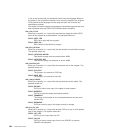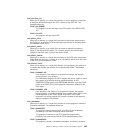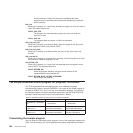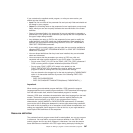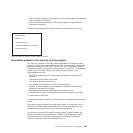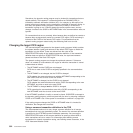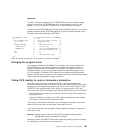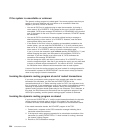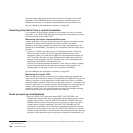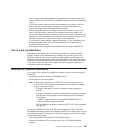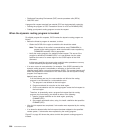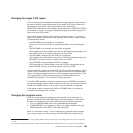Sometimes, the dynamic routing program may be invoked for transactions that are
routed statically. This happens if a transaction defined as DYNAMIC(YES) is
initiated by automatic transaction initiation (ATI)—for example, by the expiry of an
interval control start request—but the transaction is ineligible for dynamic routing. In
this case, the dynamic routing program is called only to notify it of where the
transaction is going to run. It cannot change the remote system name, and any
changes it makes to the SYSID or NETNAME fields in the communications area are
ignored.
For transactions that are run remotely, either because they are defined as remote or
because they are dynamically routed to a remote CICS region, CICS monitoring is
informed of the SYSID of the remote CICS region. For transactions that the
dynamic routing program routes locally, the monitoring field is set to nulls.
Changing the target CICS region
The communications area passed to the dynamic routing program initially contains
the system identifier (sysid) and netname of the default CICS region to which the
transaction is to be routed. These are derived from the value of the
REMOTESYSTEM option of the installed transaction definition. If the transaction
definition does not specify a REMOTESYSTEM value, the sysid and netname
passed are those of the local CICS region.
The dynamic routing program can change the sysid and netname. If it does so
when it is invoked for route selection, the region to which the transaction is routed
is determined as follows:
v The NETNAME and the SYSID are not changed.
CICS tries to route to the SYSID as originally specified in the communications
area.
v The NETNAME is not changed, but the SYSID is changed.
CICS updates the communications area with the NETNAME corresponding to the
new SYSID, and tries to route to the new SYSID.
v The NETNAME is changed, but the SYSID is not changed.
CICS updates the communications area with a SYSID corresponding to the new
NETNAME, and tries to route to the new SYSID.
v The NETNAME is changed and the SYSID is changed.
CICS overwrites the communications area with a SYSID corresponding to the
new NETNAME, and tries to route to that new SYSID.
If the NETNAME specified is invalid, or cannot be found, SYSIDERR is returned to
the dynamic routing program—which may deal with the error by returning a different
SYSID or NETNAME—see “If the system is unavailable or unknown” on page 594.
If the routing program changes the SYSID or NETNAME when it is invoked for
notification, the changes have no effect.
Using a common transaction definition in the TOR
The recommended method is to use a single, common definition for all remote
transactions that are to be dynamically routed. The name of the common definition
is specified on the DTRTRAN system initialization parameter. You can use the
REMOTESYSTEM option of the common definition to specify a default AOR to
which transactions are to be routed. For information about defining remote
transactions for dynamic transaction routing, see Defining remote resources, in the
CICS Intercommunication Guide.
592 Customization Guide



